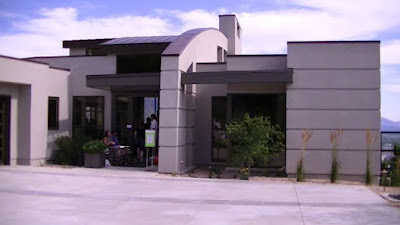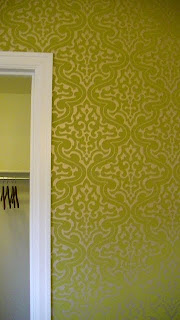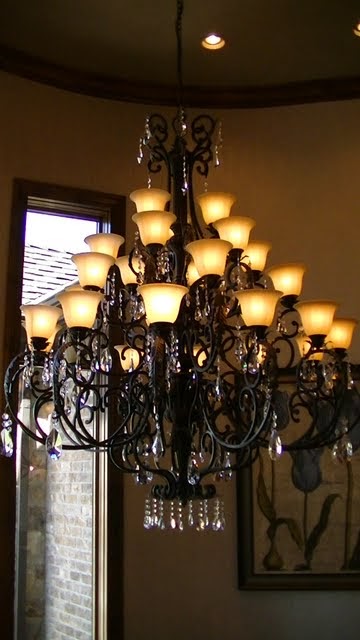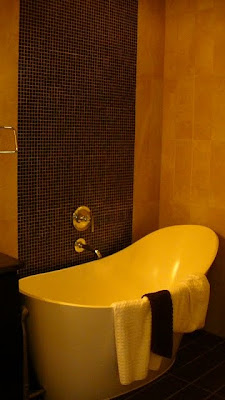Being blessed with a long Sunday afternoon with nothing to do for the first time in MONTHS, I thought I would resurrect
ye olde blogge and give you all a little insight into what Interior Design school--you know, that thing that has been distracting me from blog writing for the past six months--is really all about. I've had a couple of people tell me that they are vicariously enjoying my educational experience with me, so I thought I'd bring you all into my world and let you know what it is that is taking up all my time.

First, I would like to address the question of what an Interior Designer really does. This is the first thing they talk about in your "Introduction to Interior Design" class. Professional "Interior Decorators" began turning up around the end of the nineteenth century, mainly for upper class women who wanted someone with "good taste" to help them pick out their curtains and paint colors. They would see someone who had decorated their home nicely and ask them to help them with their own house, and through word of mouth, they were soon helping all their wealthy friends and neighbors pick out their drapes and wallpaper everything into oblivion. Eventually, people figured out that they could get paid for providing these services, and a new profession was born.
Many people still use the terms Interior Decorator and Interior Designer interchangeably, but there really is a difference, and it is very important to our egos that you acknowledge it! "Decorator" suggests a focus on arranging the ornamental or movable aspects of a room, such as the paint color, furniture, textiles, accessories, etc. The term "Designer" signifies a greater emphasis on planning, functionality, and effective use of space in addition to the decorative aspects. While being able to create beautiful color schemes and recognize quality furnishings is an important aspect of a designer's education, you are also expected to become well-versed in technical aspects of construction such as building codes and environmental issues, know how to work with acoustics, lighting and electrical plans, be able to create artistic renderings or drawings of project plans, as well as be proficient in drafting floor plans by hand and with computer software for the use of contractors and for presentation purposes. A designer is also a salesman, and must learn the best methods and techniques to convey that concept to businesses and homeowners. While most people think of interior designers as working mainly with residential projects, there are also hundreds of opportunities for designers in working on everything from hotels and restaurants to hospitals and schools.
In other words, there's a reason they require you to go to school for this stuff. It's a lot more than picking up the Pottery Barn catalog and telling your friend which sofa to buy. Most certified Interior Design programs are four-year bachelor's degrees. My program is a two-year Associate's Degree. (Of course, since I still have a preschooler at home, I am only taking two classes a semester, so it's going to take me a heck of a lot longer than two years to get it finished!) From the research I have done, LDS Business College is equal to other four-year programs in intensity and quality of education. They just eliminate a lot of the extra requirements that go along with a normal bachelor's degree (PE, social studies, etc). All of the required classes are directly focused on one thing: preparing you to get a job. While I enjoyed my time earning my Bachelor's degree in English at BYU, and wouldn't trade the education I got there for the world, I graduated after four years with very few real practical qualifications to enter the workforce. I could write a killer literary analysis of any given Edith Wharton novel, but let's face it, there just aren't a lot of jobs out there that require that particular skill. On the other hand, I know that when I graduate from LDSBC, I will have all the skills necessary to get a great job in design.
One of the great perks at LDSBC is that all of the teachers are adjunct faculty, meaning that they are successful professionals in the business who teach a class or two on the side, so we get all the benefits of their years of experience in the industry. I had one teacher who was an architect for years, another who traveled all over the country designing the interiors of Macy's stores, and my current Color Theory teacher is an internationally acclaimed designer who has appeared in decorating magazines and done large projects all over the world, ranging from LDS temples to Five Star Resorts.
So, now we've covered all that ground, allow me to give you a peek into what I actually have been doing in the program. As I said, I'm taking this kind of slow, so I am pretty much still stuck in what's considered the first semester of classes. The first two classes I took were "Introduction to Interior Design" and "Principles of Design." My Intro class was exactly that--they gave us an overview of what interior design is all about and what we would be studying in the program. We touched on the history of design, environmental/green issues in design, universal design (designing interiors that can be used by all people, regardless of age or physical ability), technical lighting issues, efficient space planning, the process of building a home, etc. A lot of these subjects will be classes that I will be required to take later on. We also did several group projects and some presentations in front of the class, which were graded on professional dress and speaking ability in addition to content.

"Principles of Design" taught us about the fundamental aspects of good visual design. These are principles and elements that come to play in all visual images from art to architecture and can be manipulated to create different psychological effects. The elements include things like form, space, shape, line, color, texture, and some of the principles are harmony, scale, proportion, emphasis, balance, etc. We studied current and historical uses of these principles and elements in buildings, artwork, and, of course, interior design, and had to create a presentation showing and analyzing examples of each of them in those three different categories for our final project. We were also given the opportunity to put those principles into use as we designed a marketing poster for a festival, and designed and created our own home-made working light fixtures. This is my poster, but I didn't get a chance to take a picture of my lace chandelier before my kids smashed it.

This semester, I am taking Color Theory and Drafting. Drafting is drawing floor plans by hand. Of course, most professionals use AutoCAD programs to draw up their floor plans now, but apparently it is necessary to know how to do it the old school way for some reason. Drafting is basically communicating ideas through drawing, either for presenting to the client, or to tell the construction people the details of what you want them to build. There's a lot of symbolism involved, and not in a literary way! You communicate certain concepts by how dark and thick the lines are that you draw, and you can't mix them up! For instance, you have to draw the walls of the floor plan in your darkest and heaviest pencil lead, then you have to switch to your medium pencil lead to draw the interior fixtures like sinks and cabinets. You have to list all the dimensions in a certain way, and if you have to make any written notes, you first have to draw guidelines with your lightest pencil lead and then write everything in all caps EXTREMELY neatly and consistently! As a person with very sloppy and inconsistent handwriting, I've found it quite challenging. After all this, you have to deal with all the mess and smudging that comes from drawing with soft pencil leads. Definitely makes me glad that we can do this on the computer in the future!

Color Theory is probably my favorite class so far. For one thing, it's the first class that I have actually been able to start coming up with my own interior designs. We began by talking about the science and psychology of color--how our eyes perceive color, how light affects color, how color affects us physically and emotionally, what color conveys to us based upon our cultural experience, etc. Then we moved on to talk about different kinds of color schemes, such as achromatic, analagous, complementary, triad, etc, and the pros and cons of using them. We mixed poster paints to learn how to achieve a variety of color effects, and our current project is to trace a piece of wallpaper and recreate the wallpaper pattern in paint as exactly as we can, using just the three primary colors plus black or white. We are then applying these concepts to interior design as we learn how to create an effective presentation, or "color" board, in which we display fabrics, wood or metal finishes, paint colors, etc to sell clients on our ideas. Our final project will be working with one of our teacher's actual clients and selling them on our design. I am learning a lot from this class and can see so many different ways to apply this kind of stuff!
So, that's what I've got so far, and I know it was long, but it's really just the tip of the iceberg! I am still so excited to be able to get this education! It has been so fun for me. It is such a great mix of creativity and analytical thinking, a perfect balance of my right and left brain! I feel so lucky to be learning how to have a career in something that I love.














































































